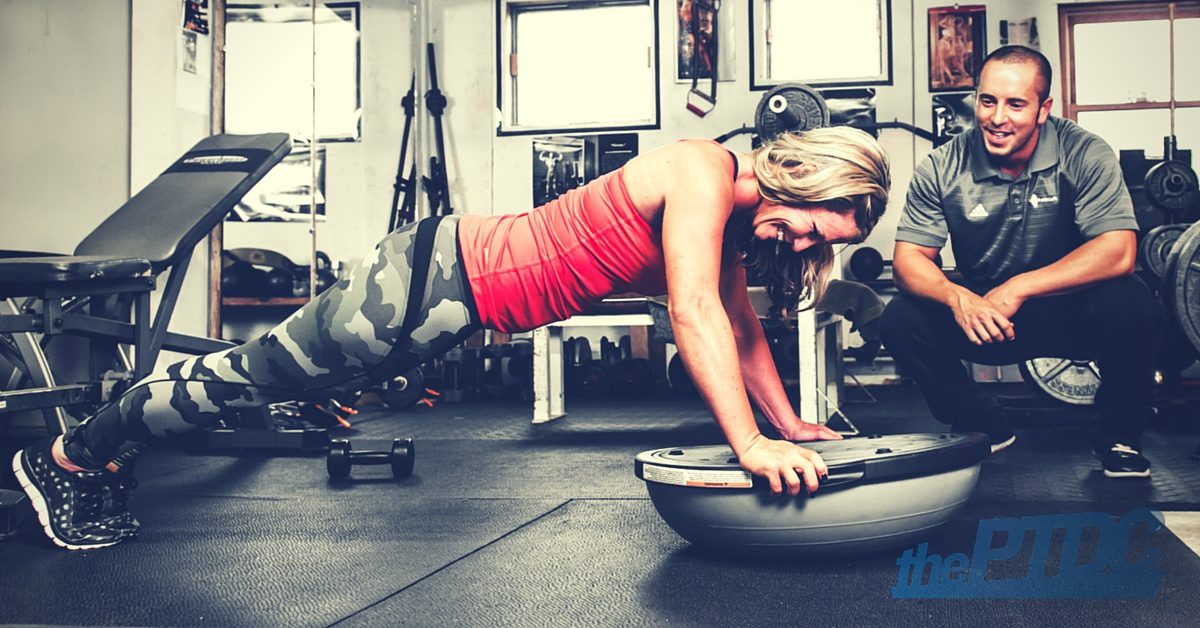Exercise is a science. Many of us spent years of schooling and thousands of dollars learning all about it. Yet when it comes to applying those scientific principles to training real people, it quickly becomes far more art than science.
No two clients have the same limb lengths or ranges of motion. They don't look the same when they squat and hip hinge. They don't learn in the same fashion, respond the same way to a given cue, or perceive exercise intensity in the same way. Basically, we can't expect to do the exact same things with every client and expect the same results.
Instead we have to be able to draw on delicate and personable techniques to help our clients be their very best. Whether we want to help our clients with proper form, help them progressive overload, or increase their strength, these are the coaching techniques that every great trainer should pay attention to.
1. Cater to your client every session.
At the beginning of every session, ask your clients how they're doing and adjust based on how they're feeling that day.
In an ideal world, every program would be executed exactly as written. Of course, on days that clients feel great, we can certainly push them hard and follow the workouts to a tee. Unfortunately though, life tends to happen, and adjustments often need to be made on the fly.
For example, on deck for the day is a five-rep max back squat. The thing is, your client has a deadline for work this week and is running on just a few hours of sleep. At best, his performance on the 5RM test will probably be subpar. At worst, the client could get hurt.
To determine your client's readiness to train, a simple "How are you?" usually does the trick. You can also ask questions like how they have been sleeping, when they last ate, how much they drank today, how things are going with school/work/relationships, and how sore they are. All of these questions help you determine how to approach the rest of the session.
2. Underestimate your clients.
Yes, I said underestimate them.
We generally have a pretty good idea just from eyeing someone up and down (or better, a thorough assessment) of how much weight they can lift and where they fall along an exercise progression.
Sometimes, though, we make mistakes and prescribe weights that are too heavy or exercises that are too complex. In these instances, the client inevitably believes himself to be at fault, which can result in feelings of frustration and ineptitude on his part.
To avoid these situations entirely, err on the side of "too light" and "too simple".
As soon as the client displays proficiency, bump them up in weight or progress the movement. It's far better to start light and easy and advance from there than the reverse scenario. Remember, success breeds success.
As a corollary, always praise before critiquing and tack on positive reinforcement at the end of your remarks. For example, tell your client, "I like how you're keeping your chest up on those deadlifts. Just remember to keep your neck neutral too. Overall, that looks really smooth!"
3. Demonstrate an exercise with the exact form you want to see.
Never assume that your client knows an exercise without demonstrating it first, even something as commonplace as a push-up or plank.
Instead, show clients exactly how you want them to perform every exercise.
For the demonstration, include the exact setup, execution, and tempo with which you want them to perform the exercise. Also show the most common mistakes they should avoid.
In general two perfect reps, one incorrect rep, and another perfect rep will suffice.
4. Speak in the client's language.
Experiment with a variety of cues to reinforce proper technique.
Internal cues direct clients' focus to what's going on inside their bodies. Examples of internal cues for the deadlift would be "chest up" and "squeeze your glutes at lockout." These cues are especially apt for ensuring that the client feels the correct muscles working during the exercise (i.e. the mind-muscle connection).
At the same time, be sure to use language they can understand. For example, a beginner may not know where their glutes are. Rather than overwhelm someone with an anatomy lesson, simply instruct them to "squeeze your butt."
In contrast, external cues direct clients' focus to outside their body. The parallel external cues for the deadlift would be "show the wall in front of you the letters of your shirt" and "bring your hips to the bar." When it comes to the expression of maximal strength, external cues usually trump internal ones.
No matter which cues you're using, be concise. Two or three precise cues are usually enough. Don't over-cue. Any more than that can result in information overload and "paralysis by analysis".
New exercises will rarely look perfect the first time, so as long as the client isn't in danger of getting hurt, it's okay to let them work things out on their own for a set or two. Oftentimes form will improve from set to set without any further coaching (the human body is amazing, isn't it?).
5. Use tactile cuing when appropriate.
Different clients learn differently. Some clients pick up new exercises as soon as they see them once. Others learn better with verbal instruction. For some, no amount of visual or auditory cuing will elicit the proper technique. For these clients, tactile cuing is often the solution.
Tactile cuing can be as simple as manually adjusting the client's body into a desired position. (Be sure to ask the client if it's okay to touch them first.)
A couple of good examples of this technique are physically pulling the shoulder blades down and back in the setup of the deadlift, and tilting the pelvis out of anterior tilt in a push-up.
Tactile cuing can also be applied without touching the client at all by using tools like a resistance band (e.g. pulling the front knee into valgus during a split squat to exaggerate a mistake) and a PVC pipe (e.g. held on their own back by the client to groove the hip hinge).
6. Get constant feedback after exercise sets.
Let's say your client is performing a couplet of six reps of heavy bench presses and 10 reps of easy cable shoulder external rotation. Apart from the "eye test", how do you know the client is exerting themselves appropriately during each exercise?
To take the guesswork out of the equation, simply ask them, "How hard was that set on a scale from 1-10?"
For primary exercises like bench press, strive for an 8/10 or 9/10 on work sets. For auxiliary exercises like external rotation, shoot for a 6/10 or 7/10. Scores lower than 6/10 should generally be reserved for warm-up sets and teaching new exercises.
Familiarize yourself with your clients' unique rating systems, as there is tremendous variation from one person's to the next. Some clients will tend towards a 9 for an exertion level that others might deem a 6.
7. Record videos of your clients performing exercises from multiple angles.
Sometimes no matter how many different ways you explain to a client what they're doing wrong, they just don't understand. This can be especially true of movements with a high-velocity component (e.g. plyometrics, Olympic lifts, sprinting).
In these cases, it's best to actually show them what they're doing by recording a video of them performing the exercise.
Record from multiple angles and play it back to the client at regular speed and in slow-motion, pausing at specific frames that highlight the error. Many times as soon as they see the mistake on their own bodies, they're able to correct it.
Save old videos to compare to future videos as a means of documenting progress. Improved technique is a form of progressive overload, after all!
8. Include your clients if possible.
Some clients like to be told exactly what to do. Others prefer to be a part of the decision-making process. For those clients who want more say in the matter, here are three easy ways to let them in without significantly affecting the outcome of the workout:
- Provide clients with rep ranges, as opposed to a specific number of reps (e.g. 3-5, 6-8, 8-10, 10-12, 12-15).
- Allow clients to choose their preferred implement for one or two exercises (e.g. overhead press with a barbell, kettlebells, or dumbbells).
- Give clients the choice between two exercises that confer similar enough training effects for their purposes (e.g. pull-ups and lat pull-downs for someone who can perform both well).











